Rate this article :
This article was useful to you ?
Yes
No
Vous avez noté 0 étoile(s)
Sommaire
Procédure
The use of extensions and plugins is essential to extend the functionality of your WordPress site. In this documentation, you will learn how to effectively manage these extensions and plugins using the LWS WP Manager. Whether you're installing, updating or deleting them, you'll have the tools you need to manage your extensions with ease.
First of all, you need to access the WP Manager function on the hosting where you want to manage the installed WordPress instances.
In the list of Wordpress instances on your hosting, click on the 3 dots to the right of the instance you want (1). In the menu that appears, click on"Manage WordPress installation":

Once in the WordPress installation management, click on the"Plugins" tab to view the list of extensions installed on your WordPress instance:

With WP Manager, you have several options for activating or deactivating extensions.
Option 1: Activate all extensions
Once you have accessed the list of extensions (plugins), click on the"Activate all" button.
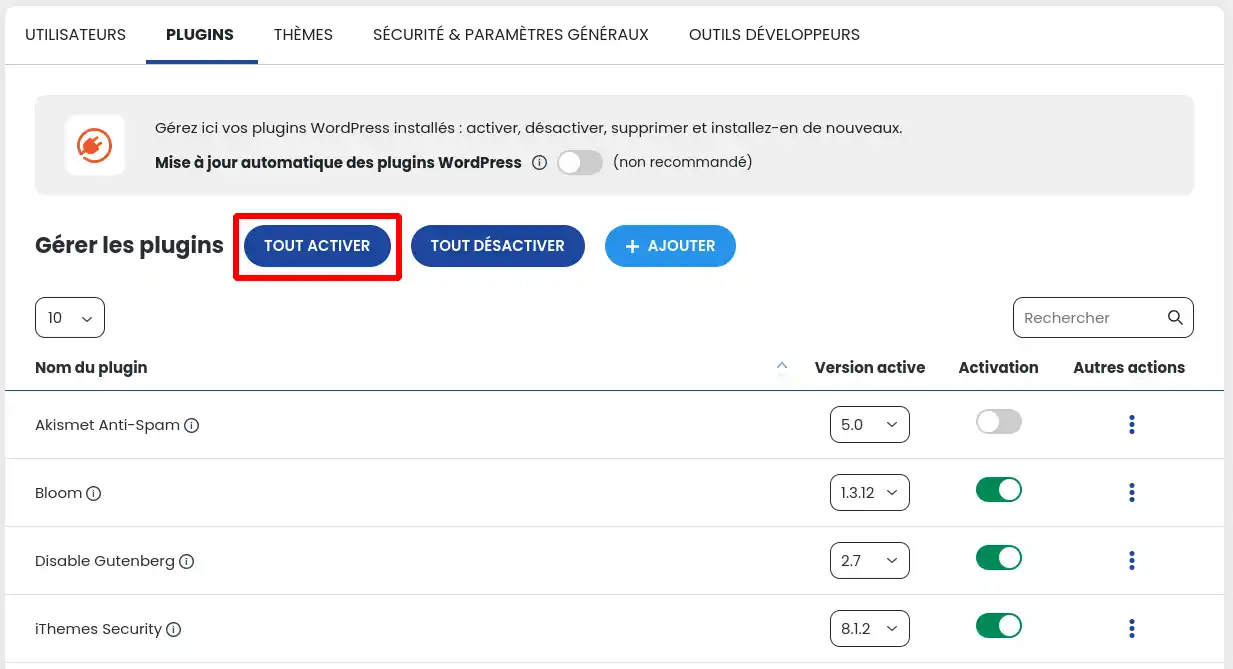
This action automatically activates all the extensions installed on your WordPress site. If you use this function, be sure to check in advance that there are no incompatibilities between two extensions installed on your site.
Option 2: Deactivate all extensions
Once you have accessed the list of extensions (plugins), click on the"Deactivate all" button.

This action automatically deactivates all the extensions installed on your WordPress site. As a result, your WordPress site may experience a few malfunctions if some extensions were essential for it to function properly. However, this procedure can be useful for identifying an extension that is causing a problem. The principle is to deactivate all the extensions, then reactivate them one by one, checking the site's behaviour each time to determine which extension is causing the problem.
A second method allows you to deactivate all the extensions: From the list of Wordpress instances in WP Manager, click on the 3 dots to the right of the desired instance (1). In the menu that appears, click on"Deactivate all plugins":

Option 3: Activate or deactivate a single extension
Once you have accessed the list of extensions (plugins), click on the cursor on the line of the extension you wish to activate or deactivate.
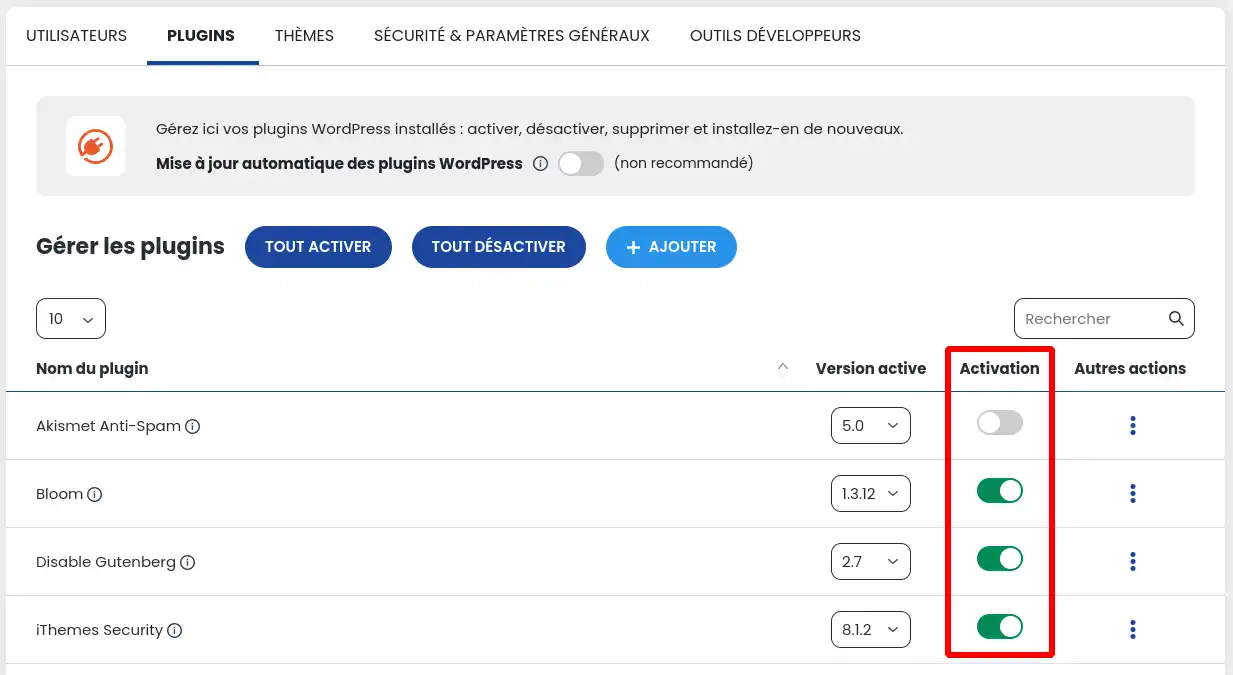
If the slider is grey, then the extension is inactive. Conversely, if the slider is green, then the extension is currently active.
To add an extension to your Wordpress site, click on the "+ Add " button located above the list of extensions.

You will then be redirected to the add extension form at the bottom of the same page.
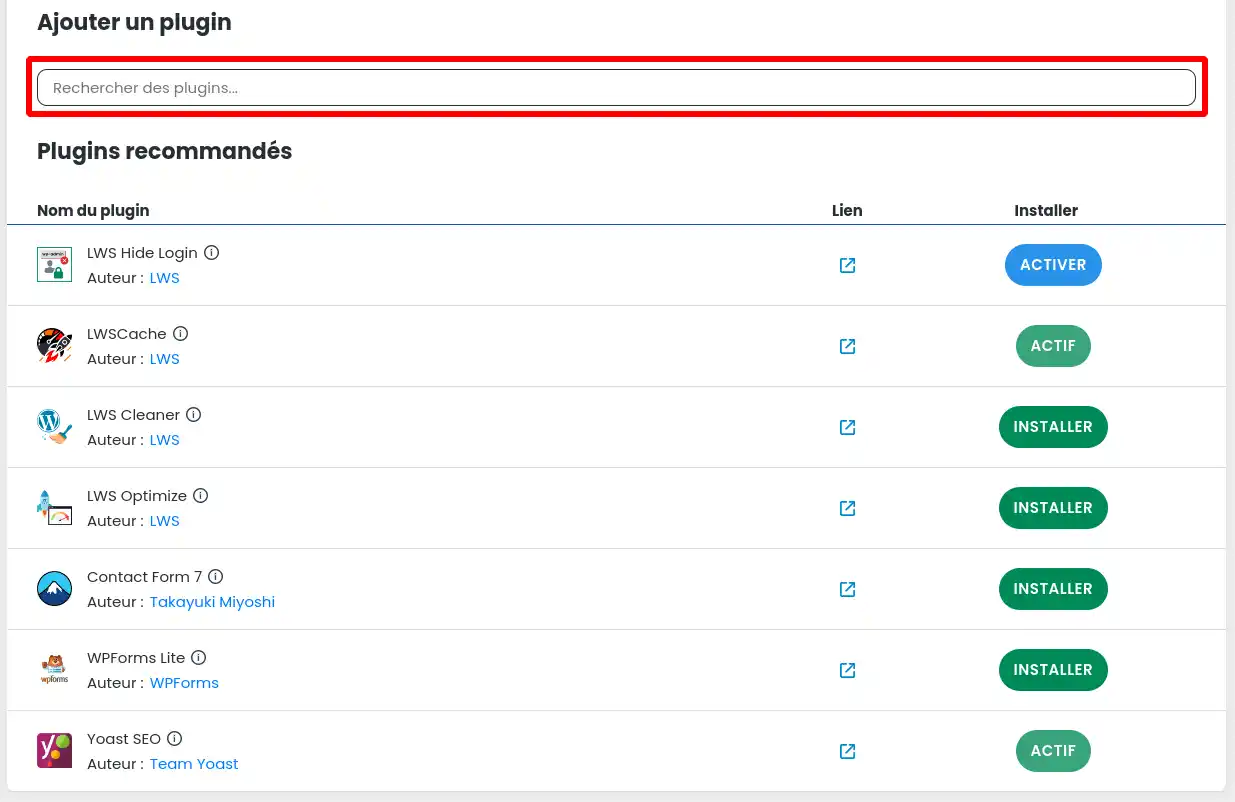
You then have the option of installing one of the recommended extensions or searching for an extension in the WordPress catalogue by entering a term in the field indicated by a red frame in the screenshot above. The term can be part of the name of a plugin you're looking for in particular, or a generic term such as "form", for example, in order to search for all the extensions that allow you to create a form on WordPress.
For the example, we're going to search for extensions around the term "Elementor".

The screenshot above shows the result of the search. Once you've made your choice, click on the "Install" button.

Once the plugin has been correctly installed on your site, you need to activate it. This can be done by following point II of this same documentation or by clicking on the "Activate" button in the search listing.

Once activated, the extension goes into active status as shown in the screenshot below and you can immediately use it on your WordPress site.

To update an extension, go to the list of extensions on your Wordpress site and click on the 3 dots to the right of the extension you want (1). In the menu that appears, click on"Update":

The update may take from a few seconds to a few minutes, so wait until the end of the process to check that everything is working properly.
Activating automatic updates for extensions is a very practical way of keeping your site up to date without having to check regularly, but it should be used with caution. Indeed, an update can lead to incompatibility with another extension, a theme or the version of WordPress and render your site partially or totally non-functional. That's why we don't recommend using this feature, although it can be activated by informed users.
To activate the automatic update of extensions, simply activate the slider at the top of the "Automatic update of WordPress plugins" extension management page.
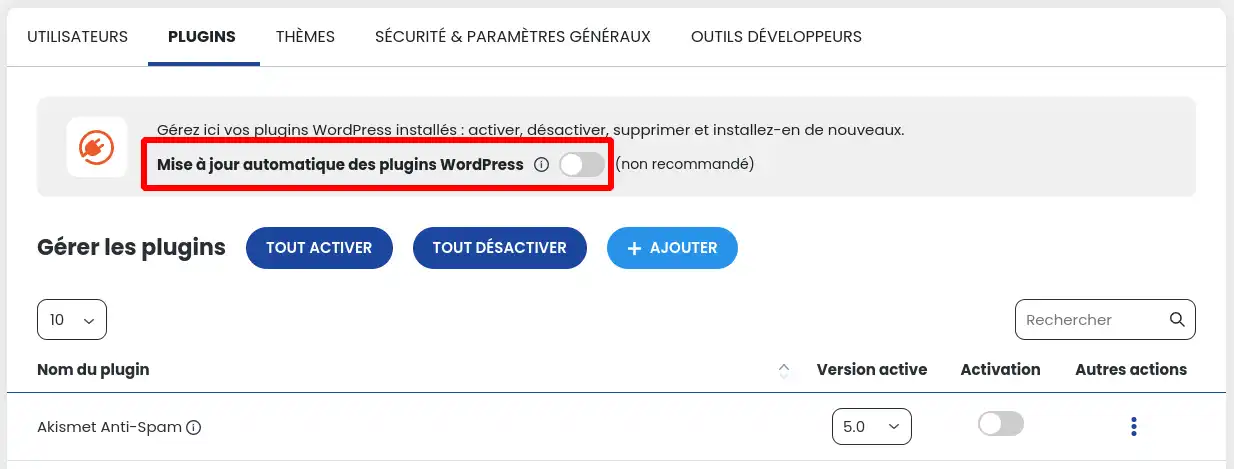
If the slider is grey, then the functionality is inactive. Conversely, if the slider is green, then the functionality is currently active.
It is possible that the latest version of a recently updated extension is not compatible with all the modules of your WordPress site or with the PHP parameters of your hosting.
In this case, you can revert to a previous version of the extension.
To do this, you can select, in the list of extensions, the version of each module you wish to use and reinstall a previous version of the one causing the problem:

To remove an extension, go to the list of extensions on your Wordpress site and click on the 3 dots to the right of the extension you want (1). In the menu that appears, click on"Delete plugin":

The listing is then updated without the extension that has just been deleted.
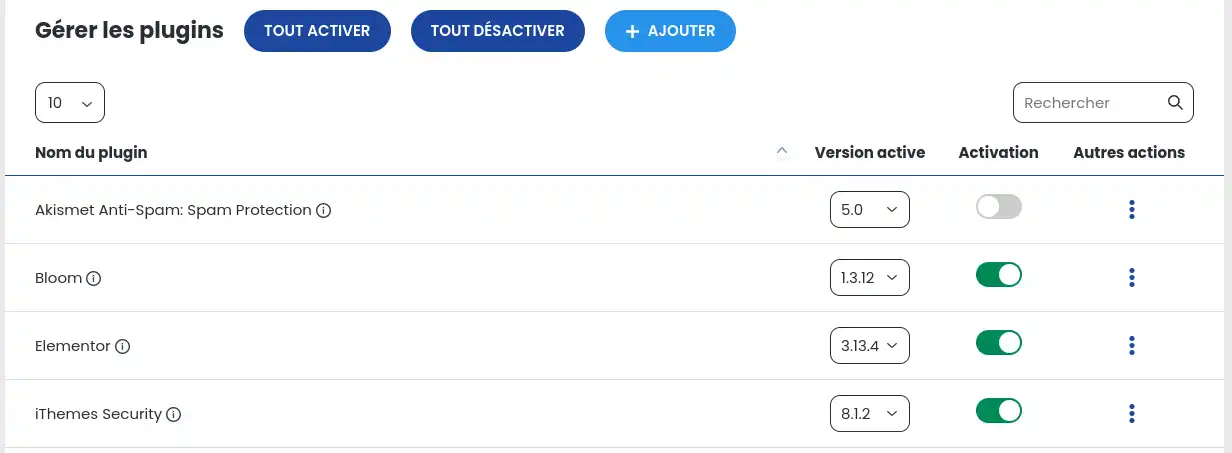
You now know how to :
With this knowledge, you can now optimise the usability and functionality of your WordPress site with confidence and ease. 🌟 Don't forget that mastering your extensions is a major asset for the security and performance of your website. 🛠️
We hope you have found this guide useful and thank you for reading. If you have any questions or feedback to share, please don't hesitate to leave us a comment. Your opinion is important to us and helps us to improve our services! 💬
See you soon for new WordPress adventures with LWS! 👋
[tips_related_readings]Managing updates to my Wordpress site with WP Manager [/tips]
Rate this article :
This article was useful to you ?
Yes
No
1mn reading
How do I search for Wordpress installations on my hosting?
1mn reading
How do I manage Wordpress users with WP Manager?
1mn reading
How do I manage updates to my Wordpress site using WP Manager?
2mn reading
Control your WordPress themes with WP Manager on LWS panel ?